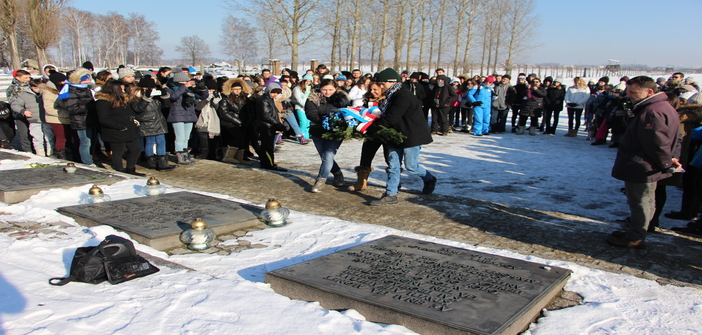As part of the Department’s Action Plan for the respect of republican and civic values among young people, presented in November 2015, the Department invited 7 classes from secondary schools to visit the Auschwitz concentration camp, with seven 9th-grade classes.
This journey of remembrance adds a tangible element to the students’ courses on the Holocaust, and those since 2004. Moreover, these adolescents can witness firsthand the horror of living conditions in the Auschwitz I and II camps. “We could never have imagined it like this. This trip allows us to be more in the context,” testifies a student from Saint-Barthélémy College.
They walked in the footsteps of the 1,100,000 Jews who were detained, just like 15,540 secondary school students before them. Emotions and different atmospheres intertwined during this day of discovering this dark part of History.
At the Birkenau camp, also called Auschwitz II, they were able to see the terrifying living conditions of the deportees. On this 170-hectare site, the tracks and the only remaining wagon show the site’s purpose: the “final solution.”
Between dormitories, toilets, and showers, the guide immerses them in the unbearable atmosphere of these living quarters. “Imagine yourselves ten on these planks, to sleep, with only pajamas to keep you warm and practically nothing in your stomach.”
At the Auschwitz I concentration and forced labor camp, the students could discover the faces of these deportees and their belongings. The most striking for many of them remains the six tons of hair from the deportees, cut upon their arrival.
When the first visit to the Birkenau camp came to an end, all the students gathered near the 27 commemorative steles where it is inscribed in different languages: “May this place where the Nazis murdered a million and a half men, women, and children, mostly Jews from various countries of Europe, be forever for humanity a cry of despair and a warning.”
After some students recited texts and a wreath was laid, a minute of silence was observed. Through presentations, video montages, prose texts, poems, or even drawings, the students will then be able to convey their emotions upon returning from the trip.
“You are the living memory”
The memory journey is aptly named. These trips are so called because they are determined to promote the work of memory so that future generations never forget the horrors perpetrated by the Nazis. The guide emphasized this, concluding the visit with these words: “You are the living memory. It’s very important that you come here. In 20 years, there will be no more direct witnesses, and it will then be up to you to tell the story.”
The young people have indeed become aware of this. The students from Saint-Barthélémy College demonstrate this. “I will be able to tell my little sister when she is in middle school.” Her friend adds: “We have taken photos that we can show to others. It spreads, and it’s important so that it doesn’t happen again.”
Yaële Lerner accompanied the class from the Nice secondary school in the morning. She is the wife of a survivor of the Warsaw Ghetto, the only one from his family, and is part of the Association Mémoire des Enfants Juifs Déportée in the Alpes Maritimes.
During the visit to the two camps, she provides testimony, exchanges with the guide, and takes notes. “There are so many stories in my family that I don’t have to tell the same ones,” she says sadly. “I want to be the witness of the witnesses. It’s painful every time to tell, but I feel it’s a duty.”



